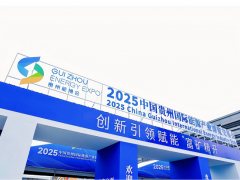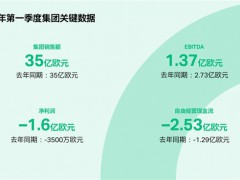據美國鉆井網站2022年8月11日報道,海上風電產業已經不再處于起步階段,它是一項已經過驗證的技術,它將在全球經濟脫碳中發揮關鍵作用。伍德麥肯茲表示,未來十年,海上風電產業將吸引近1萬億美元的新投資。
伍德麥克茲表示,越來越多的競爭對手正蜂擁而至,希望利用這股熱潮將創造的巨大機遇。目前,石油巨頭——尤其是歐洲的石油巨頭——在這個海上風電市場上所占的份額還很小,但隨著它們在零碳價值鏈上押下更大的賭注,它們的雄心正在增強。
長期以來,上游行業一直以每桶油當量(boe)為基礎分析現金利潤率。這一易于理解的指標揭示了上游油氣資產每單位生產產生的經營現金流。這對于闡明現金產生能力和基準投資組合特別有用。
傳統的可再生能源投資分析與油氣投資相比,通常側重于相對風險和回報。但伍德麥肯茲聲稱,與傳統業務的比較需要新的衡量標準。這家分析公司使用的新的現金利潤率指標——吉焦當量(GJe)的營運現金流——超越了傳統的比較,它揭示了海上風電產業的優勢。
通過追蹤資產數據,海上風電產業將為石油巨頭帶來比新油田油氣項目高25%的單位運營現金利潤率。即使是最低的海上風電投資組合的平均運營現金利潤率也高于上游的平均水平。而且,可再生能源技術的利潤率超過了深水——這是石油巨頭利潤率最高的資產類別。
海上風能的強勁營運現金利潤率表現表明,其財務獎勵不僅僅是長期穩定的現金流。這樣的現金收入可以很好地支持其他投資組合領域,實際上,也可以提供大量股息,并對沖碳和碳氫化合物價格的風險。
如果海上風電產業想要吸引到所需的資本,在實現全球氣候目標方面發揮作用,那么海上風電項目不斷下降的內部收益率將是不可持續的。伍德麥克茲認為,中位數的回報率是不可接受的。
企業已經開始依賴傳統的債務融資和資產循環工具來提高內部收益率。隨著該行業的成熟,其他手段也將發揮作用,以提高回報,如增加商業敞口、電力交易和建設電力-x項目。
伍德麥肯茲還在報告中表示,石油巨頭可能會在海上風力發電方面進行長期嘗試,因為該行業并非沒有挑戰。供應導致的成本上漲和債務成本上升的烏云籠罩著海上風力發電,該行業目前正努力應對供應過剩的問題,而下一代技術的需求意味著將需要大規模投資來支持新的塔式生產設施。
但經過多年對石油和天然氣波動的管理,石油巨頭已經具備在風險和回報之間取得平衡的能力。石油巨頭手頭寬裕,可以充分利用即將到來的巨大機遇。在最近創紀錄的石油和天然氣價格以及創紀錄季度利潤的幫助下,石油巨頭肯定已準備好這樣做。
李峻 編譯自 美國鉆井網
原文如下:
Big Oil To Go Deep Into Trillion-Dollar Offshore Wind Industry
No longer in its infancy, offshore wind is a proven technology on course to play a key role in the decarbonization of the global economy. Over the next decade, the industry will attract almost $1 trillion in new investment, Wood Mackenzie said.
According to Woodmac, a growing number of competitors are flocking to take advantage of the massive opportunities that will be created by the boom. The Majors – notably the European Majors – are no exception. Right now, their share of the market is small, but ambition is ramping up as they bet bigger with their investments in the zero-carbon value chain.
The upstream sector has long analyzed cash margins on a per barrel of oil equivalent (boe) basis. This well-understood metric reveals how much operating cashflow upstream oil and gas assets generate per unit of production. It’s especially useful for articulating cash generation capacity and benchmarking portfolios.
Conventional analysis of renewables pitted against oil and gas investment usually focuses on relative risk and returns. But Woodmac claims that the comparison with the legacy business needs new metrics. The new cash margin metric used by the analytics firm – operating cash flow per gigajoule equivalent (GJe) – goes beyond traditional comparisons, and it reveals that offshore wind comes up trumps.
Tracking asset-by-asset data, offshore wind will deliver 25 percent higher unit operating cash margins for Big Oil in comparison to new field oil and gas projects. Even the lowest offshore wind portfolio average operating cash margin is above the upstream average. And the renewable technology’s margins trump deepwater – Big Oil’s highest margin asset class.
Offshore wind’s strong operating cash margin performance shows that the financial prize is more than simply long-term and steady cash flows. Such a cash wedge within a business is a good way to support other portfolio areas or, indeed, a significant dividend commitment, and to hedge exposure to carbon and hydrocarbon prices.
Returns do matter. Falling IRRs from offshore wind projects will not be sustainable if the sector is to attract the capital required for it to play its part in meeting global climate goals. Woodmac believes that mid-single digit returns will not be acceptable.
Companies have already been leaning on traditional tools of debt-financing and asset rotation to lift IRRs. As the sector matures other levers, such as increasing merchant exposure, power trading, and building power-to-x projects, will also come into play to boost returns.
Wood Mackenzie also said in its report that the Majors could play the long game with offshore wind as the industry is not without challenges. Dark clouds of supply-led cost inflation and the rising cost of debt are looming large over offshore wind and the industry is currently grappling with oversupply, while the demands of next-generation technology mean that massive investment will be needed to back new tower production facilities.
But after years of managing volatility in oil and gas, the Majors are equipped to get the balance between risk and return right. And they are flush with deep pockets of cash to take advantage of the huge upcoming opportunities. Helped by recent record prices of oil and gas as well as record quarterly profits, they are certainly well posed to do so.
免責聲明:本網轉載自其它媒體的文章及圖片,目的在于弘揚石化精神,傳遞更多石化信息,宣傳國家石化產業政策,展示國家石化產業形象,參與國際石化產業輿論競爭,提高國際石化產業話語權,并不代表本網贊同其觀點和對其真實性負責,在此我們謹向原作者和原媒體致以崇高敬意。如果您認為本站文章及圖片侵犯了您的版權,請與我們聯系,我們將第一時間刪除。







